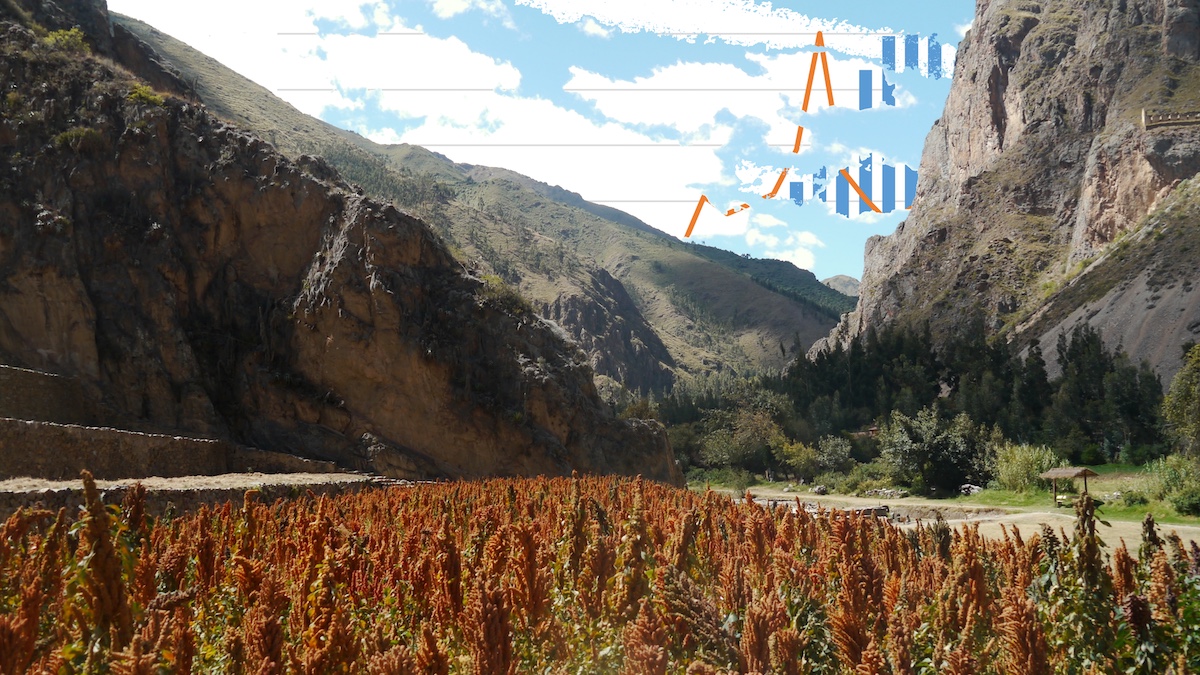
Podcast: Play in new window | Download (Duration: 29:38 — 27.3MB)
Subscribe: Google Podcasts | Spotify | Android | RSS | More

Emma McDonnell was in Peru for the early years of the boom and for the subsequent bust, a story she recounts in her book The Quinoa Bust.
Notes
- Emma McDonnell has a website. Her book The Quinoa Bust: The Making and Unmaking of an Andean Miracle Crop is published by California University Press.
- A previous episode — It is OK to eat quinoa — looked at the impact of the boom in purely economic terms.
- An issue of the USDA’s Choices magazine looked at several so-called functional foods, including quinoa, asking whether they were a Fad or Path to Prosperity?. Both, maybe.
- Here is the transcript
- The banner photo uses a picture of quinoa growing in Ollantaytambo, Peru by Hector Montero. The quinoa close up on the cover is by Flickered!
